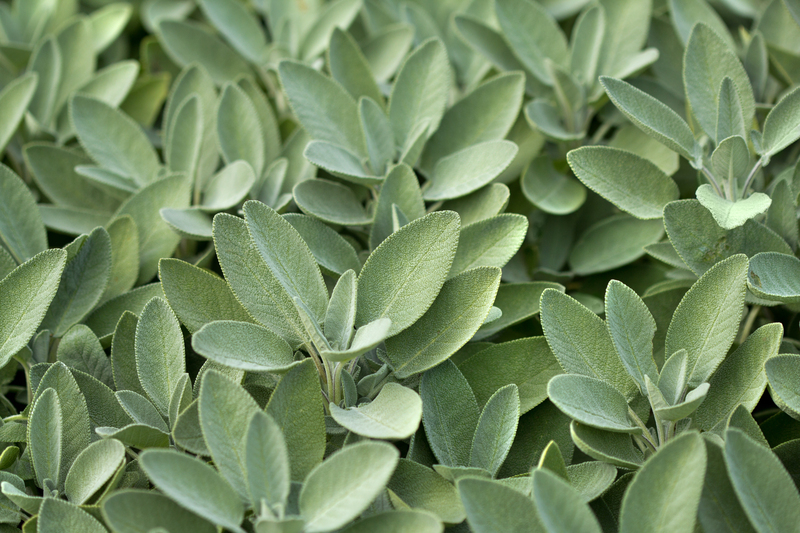Prevent Wind Damage with these Garden Protection Tips
Posted on 20/06/2025
Prevent Wind Damage with These Garden Protection Tips
Wind damage can wreak havoc on your beloved garden--snapping stems, uprooting plants, and scattering mulch and debris. If you're a gardener, preserving your plants from forceful winds is just as important as watering or fertilizing. In this comprehensive guide, you'll discover multiple garden protection tips to prevent wind damage and maintain a healthy, attractive landscape throughout the year.
Understanding Wind Damage in the Garden
Before delving into methods for wind protection, it's essential to recognize how wind affects garden plants. Strong winds can:
- Bend or snap delicate stems and branches
- Desiccate leaves, causing them to lose moisture rapidly
- Uproot young or shallow-rooted plants
- Scatter mulch and soil, exposing roots
- Increase the risk of disease through physical damage
Understanding these effects prepares you to select the most effective windproofing strategies and ensure lasting plant health.

Why Gardens Are Vulnerable to Wind
Not all gardens are created equal when it comes to wind protection. Factors increasing susceptibility include:
- Exposed locations: Gardens on hills, open fields, or coastal regions face higher wind risk.
- Lack of natural barriers: Absence of fences, hedges, or buildings allows wind to flow unchecked.
- Poor soil structure: Sandy or loose soils provide little anchorage for roots.
- Inadequate plant support: Tall, top-heavy plants are prone to bending or breaking.
Identifying these vulnerabilities is the first step toward effective wind damage prevention in your garden.
Top Garden Wind Protection Tips
Below are the best methods and practical advice on how to protect your garden from wind damage using both natural and structural approaches:
1. Erect Windbreaks and Barriers
One of the most effective solutions is to create windbreaks or garden wind barriers. Windbreaks slow wind speeds and create a microclimate within your growing space.
Types of Windbreaks:- Hedges: Thick, dense plantings of shrubs (e.g., boxwood, privet, hawthorn) make attractive and effective living barriers.
- Trees: Rows of evergreen or deciduous trees (e.g., pine, cypress, oak) around the perimeter offer year-round protection.
- Fences: Solid wood or slatted fences can deflect wind; slatted types reduce wind speed without creating turbulence.
- Trellises or lattice panels: These allow some wind through while blocking the worst blasts.
Tip: For best results, barriers should be placed perpendicular to prevailing winds and be at least as tall as your tallest plants.
2. Plant Strategically for Natural Protection
Design your garden layout to use plants themselves as shields. Tall, sturdy plants can shelter more delicate specimens--an approach sometimes called "companion planting for wind protection."
- Position sturdier species (like sunflowers or hollyhocks) on the windward side.
- Layer plants by height, with the shortest farthest from the wind source.
- Use dense or bushy varieties to form thick protective clusters.
Strategic planting not only prevents garden wind damage but also enhances biodiversity and resilience.
3. Use Stakes, Supports, and Ties
For particularly vulnerable or newly transplanted plants, physical supports are essential for windproof gardening. Here's how:
- Staking: Insert stakes next to tall, floppy plants and gently tie stems with soft, flexible ties to prevent snapping and uprooting.
- Cages and trellises: Tomato cages, peony rings, or mesh trellises stabilize clusters of stems.
- Guy wires: Secure newly planted trees with guy lines anchored to the ground; use wide, soft webbing to avoid trunk damage.
Avoid tying plants too tightly--allow for some sway, which encourages stronger roots and stems.
4. Secure Loose Mulch, Pots, and Garden Features
High winds can pick up and scatter lightweight items, exposing plant roots or causing debris damage. To prevent this:
- Use heavier mulches (bark chips, pebbles) or water down mulch after applying to help it settle.
- Anchor lightweight pots with rocks or place them in sheltered corners.
- Secure garden ornaments, bird feeders, and other features that could become airborne.
Bonus: Consider raised beds with sturdy sides for extra root and soil protection in very windy sites.
5. Optimize Soil Conditions
Healthy root systems are the foundation for wind-resistant plants. Improve soil to ensure strong anchorage and resilience:
- Mix organic matter (compost, well-rotted manure) into the soil to promote deeper, stronger roots.
- Regularly water, but avoid waterlogging, which weakens root hold.
- For sandy soils, add clay or organic material to increase weight and structure.
Regular soil care not only reduces wind damage but also boosts overall plant health and productivity.
6. Prune and Maintain for Wind Resilience
Professional growers know that proper pruning can prevent storm damage in the garden by reducing dense canopies and removing weak branches.
- Thin out crowded branches to allow wind to pass through more easily.
- Remove dead, diseased, or weak wood promptly.
- Prune tall perennials early in the season to encourage bushier, more stable growth.
Annual maintenance is the key to preventing both physical and disease problems after wind storms.
7. Add Temporary Protection During Severe Weather
Sometimes, you may need temporary wind protection for garden plants before a storm or during transitional seasons.
- Set up mesh windbreak netting around susceptible beds.
- Use cloches, row covers, or floating fabric to shield tender seedlings.
- Remove or relocate potted plants to sheltered locations, such as against a wall or into a garage.
Always check weather forecasts and take action early for the best results.
Wind-Resistant Plant Choices
Certain plants naturally cope better with wind exposure. Consider adding the following wind-tolerant species to your garden, especially in exposed areas:
- Ornamental grasses: Millettia, Miscanthus, Pennisetum
- Shrubs: Boxwood, Euonymus, Viburnum, Juniper
- Trees: Pine, Cypress, Poplar, Willow
- Perennials: Daylily, Russian sage, Yarrow
Native species are often more wind hardy and require less maintenance. Prioritize these when planning your wind-resistant garden landscape.
Common Mistakes to Avoid in Windy Gardens
Even experienced gardeners sometimes make errors that increase wind risk. Watch out for these pitfalls:
- Using solid, unventilated fences--these can create damaging wind tunnels or turbulence behind the barrier.
- Skipping maintenance--weak, overgrown, or unhealthy plants are more likely to fail in storms.
- Planting tall, brittle species in exposed spots without backup support.
- Neglecting soil health or not anchoring new plantings adequately.
Awareness and prevention are key for damage-free, wind-resistant gardening.
How to Recover Your Garden After Wind Damage
Should you experience a windstorm, quick action is critical:
- Remove debris and repair fencing or barriers promptly.
- Prune and remove snapped or damaged plant parts to prevent disease.
- Re-stake and support surviving plants wherever possible.
- Water deeply to help stressed roots recover (unless flooding has occurred).
- Reapply mulch to cover exposed soil and roots.
Document storm damage to inform future planting choices and improvements in wind protection.

Frequently Asked Questions: Protecting Your Garden from Wind Damage
Can you prevent all wind damage in the garden?
While you can significantly reduce wind risk with proper protection and planning, severe storms may still cause harm. The goal is to minimize damage and help plants recover quickly.
What type of fence is best for wind protection?
Slatted or lattice fences allow wind to pass through at reduced speeds, offering better protection than solid panels, which can blow over or create harmful eddies.
Should you prune trees before or after storm season?
Regular maintenance pruning before storm season removes dead or weak wood and allows wind to flow through, reducing breakage risk. Avoid heavy pruning after a storm unless necessary for damage control.
Can wind damage affect fruit or vegetable crops?
Yes--fruits and vegetables with soft or brittle stems, like tomatoes, peppers, and beans, are especially susceptible. Staking and protective netting are essential for these crops in windy areas.
How do you protect young seedlings or new transplants?
Use cloches, mini-greenhouses, or fabric row covers during windy weather, and keep the soil well-moistened to anchor roots. Gentle staking may also help during the establishment phase.
Conclusion: Create a Windproof Garden Sanctuary
By implementing these garden protection tips for wind damage, you'll create a safer, more resilient outdoor space where your plants can thrive. Whether you're battling regular breezes or preparing for extreme weather events, proactive measures--from strategic planting to structural barriers--ensure long-term garden beauty and productivity.
Don't wait for the next windstorm to take action. Start assessing your landscape now, introduce a mix of wind-resistant strategies, and enjoy a lush, thriving garden--no matter the weather!
Related Articles:

